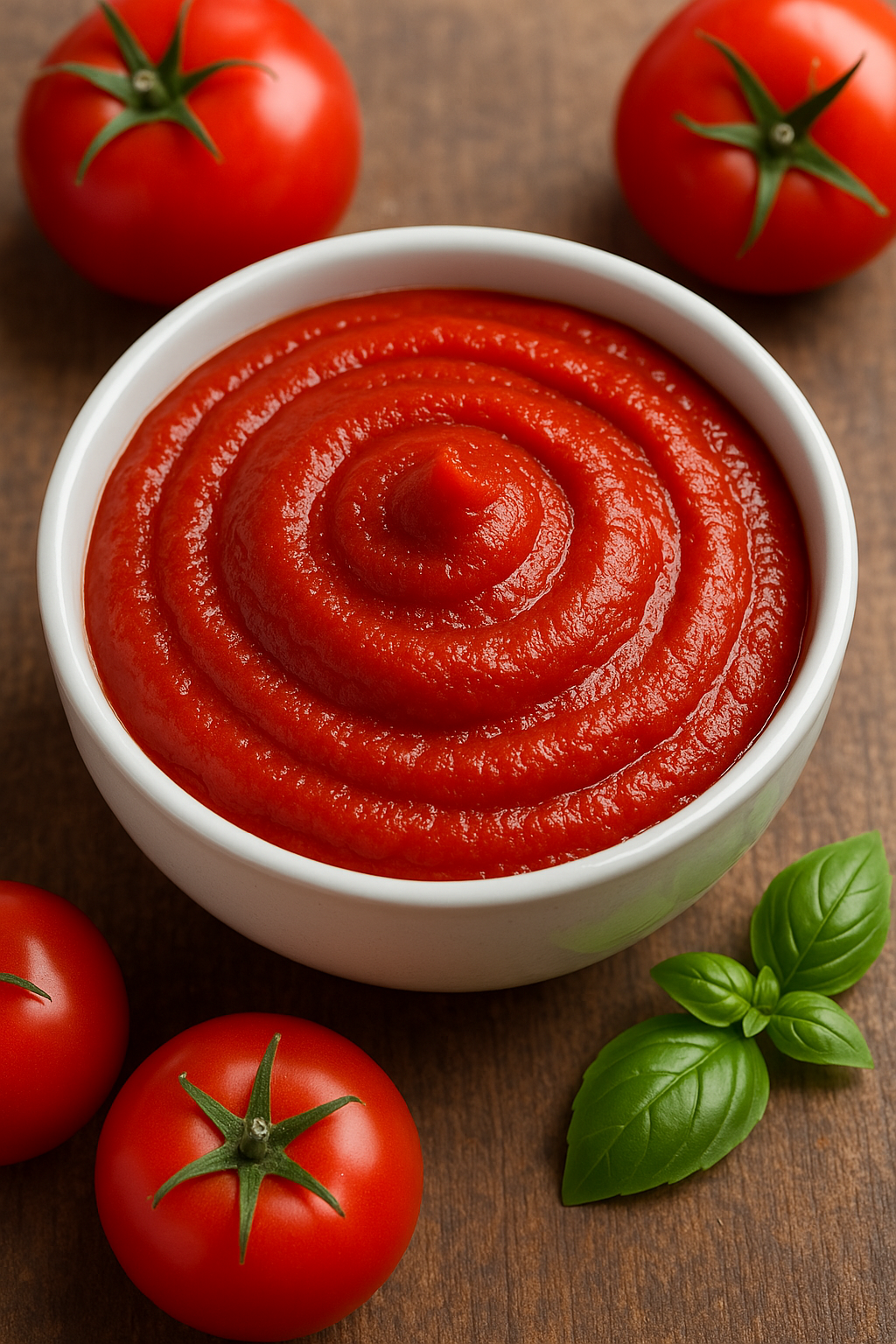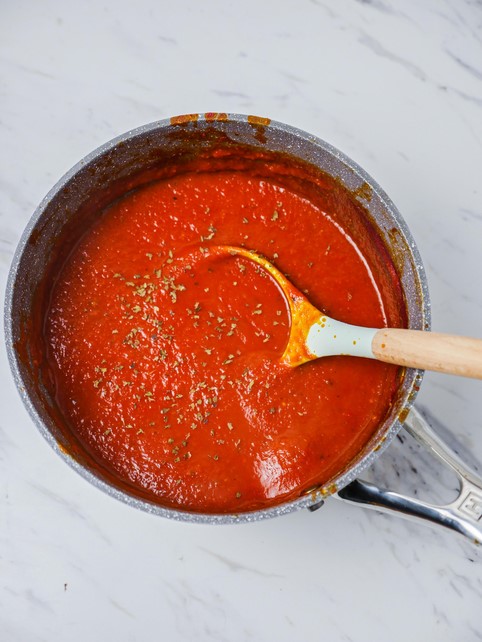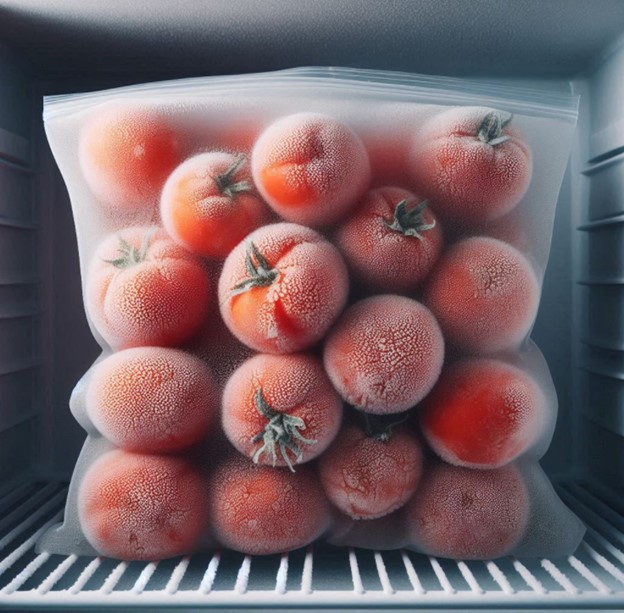Preserving the bounty of seasonal produce is a practice rooted in both tradition and practicality. Among the most versatile and widely consumed fruits, the tomato stands out as an essential kitchen staple.
Freezing fresh tomatoes is an effective method of preservation, allowing individuals to enjoy their rich flavor and nutritional benefits long after harvest season has ended. This article outlines, in detail, the processes and considerations involved in freezing tomatoes, ensuring optimal results for both culinary and storage purposes.
Why Should You Freeze Tomatoes
Table of Contents

Tomatoes, when fresh, are highly perishable. Left at room temperature or even refrigerated, they have a limited shelf life. Freezing halts enzymatic activity and microbial growth, thus extending their usability.
Unlike canning, freezing is less labor-intensive and does not require specialized equipment or high-temperature sterilization. Moreover, it preserves much of the tomato’s original taste, color, and nutritional value, particularly its vitamin C and lycopene content.
Preliminary Considerations While Freezing Fresh Tomatoes
Prior to initiating the freezing process, it is essential to assess the quality of the tomatoes selected. Only ripe, unblemished tomatoes should be used. Those with visible signs of spoilage, mold, or damage are unsuitable for freezing and may compromise the safety and flavor of the preserved product.
It is also important to note that the texture of frozen tomatoes will change upon thawing. They will become soft and are thus best suited for use in cooked dishes such as soups, sauces, stews, and casseroles.
Required Materials For Freezing Tomatoes
Here are the ingredients for freezing fresh tomatoes:
- Fresh, ripe tomatoes
- Paring knife
- Large pot (for blanching, if applicable)
- Slotted spoon
- Ice bath (large bowl of water with ice)
- Cutting board
- Freezer-safe containers or resealable plastic bags
- Permanent marker (for labeling)
Methods of Freezing Fresh Tomatoes
There are several approaches to freezing tomatoes, each catering to specific culinary needs and preferences. The primary methods include freezing whole tomatoes, chopped or diced tomatoes, pureed tomatoes, and tomato sauce.
1. Freezing Whole Tomatoes

This is the most straightforward method and can be executed with or without peeling the skins.
Procedure to freeze whole tomatoes –
- Wash the tomatoes thoroughly under running water.
- If desired, remove the cores using a paring knife.
Procedure to freeze peeled tomatoes –
- Score the bottom of each tomato with a shallow “X”.
- Submerge the tomatoes in boiling water for approximately 30 seconds.
- Immediately transfer them to an ice bath to halt the cooking process.
- Once cooled, gently peel away the skins.
- Arrange the tomatoes on a baking sheet lined with parchment paper in a single layer.
- Freeze until firm (typically 2 to 4 hours).
- Transfer to labeled freezer-safe bags or containers and store in the freezer.
You can use the tomatoes later in soups, stews, and sauces where whole or crushed tomatoes are required.
2. Freezing Chopped or Diced Tomatoes

This method allows for convenient, ready-to-use portions suitable for many recipes.
Procedure to freeze chopped tomatoes:
- Wash and core the tomatoes.
- Optionally, you can peel them using the blanching method described above.
- Dice the tomatoes to the desired size.
- Place the pieces in freezer-safe containers or bags.
- To minimize air pockets, add a small amount of tomato juice or press down gently before sealing.
- Label with the date and freeze.
You can use these tomatoes in stirred into chili, pasta dishes, or rice-based meals.
3. Freezing Tomato Puree

Pureeing tomatoes prior to freezing is ideal for those who frequently cook sauces or soups.
Procedure to freeze tomato puree:
- Wash and chop the tomatoes.
- Cook over medium heat in a large pot for 15–20 minutes, until soft.
- Blend the tomatoes using a blender or food processor.
- For a smooth consistency, strain the puree through a fine mesh sieve.
- Allow the puree to cool completely.
- Pour into freezer-safe containers or ice cube trays for portion control.
- Once frozen, transfer cubes to labeled bags and store.
You can later use the tomato puree in pasta sauce, soups, curries, and tomato-based gravies.
4. Freezing Cooked Tomato Sauce

Fully prepared tomato sauces can also be frozen and offer maximum convenience.
Procedure To Freeze Cooked Tomato Sauce
- Allow the sauce to cool after cooking.
- Portion into containers or bags, leaving headspace to allow for expansion during freezing.
- Seal tightly and label with contents and date.
- Freeze immediately.
You can use this tomato sauce as pasta sauce, pizza base, or incorporated into casseroles.
Storage Guidelines and Shelf Life of Freshly Frozen Tomatoes

Tomatoes, once properly frozen, can be stored for up to 12 months. However, for optimal flavor and quality, it is advisable to use them within 6 to 8 months. Ensure that containers are airtight to prevent freezer burn, and always label packages with the freezing date.
Defrosting and Usage of Freshly Frozen Tomatoes
Frozen tomatoes can be defrosted in the refrigerator overnight or added directly to hot dishes during cooking. Whole frozen tomatoes may be run under warm water to facilitate skin removal before use. Given the softened texture of thawed tomatoes, they are unsuitable for raw preparations such as salads but remain excellent for all manner of cooked recipes.
Wrapping Up
Freezing fresh tomatoes is a practical and accessible preservation method that retains the fruit’s core flavor and nutritional value. By selecting high-quality tomatoes and employing the appropriate freezing technique, home cooks can maintain a ready supply of this culinary essential throughout the year.
Whether used whole, diced, pureed, or as a sauce, frozen tomatoes offer versatility and convenience for a wide array of recipes, underscoring their enduring value in the kitchen.
Leave a Reply